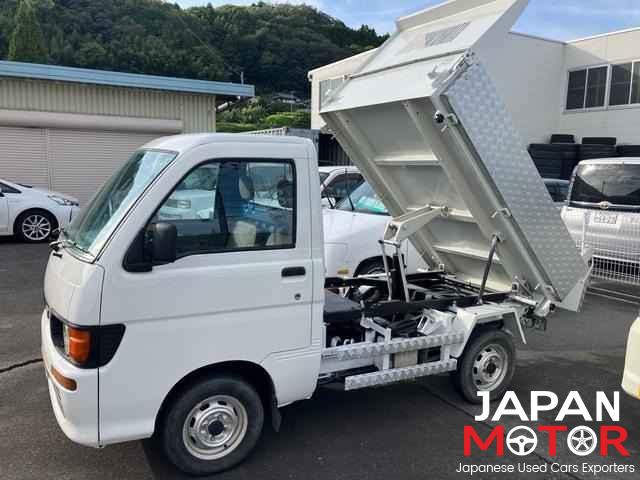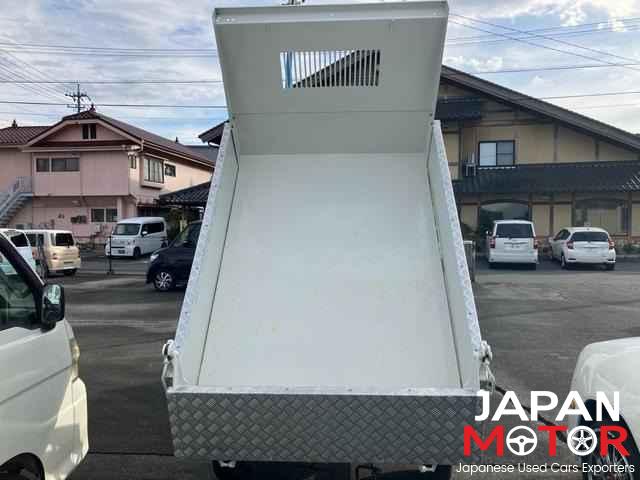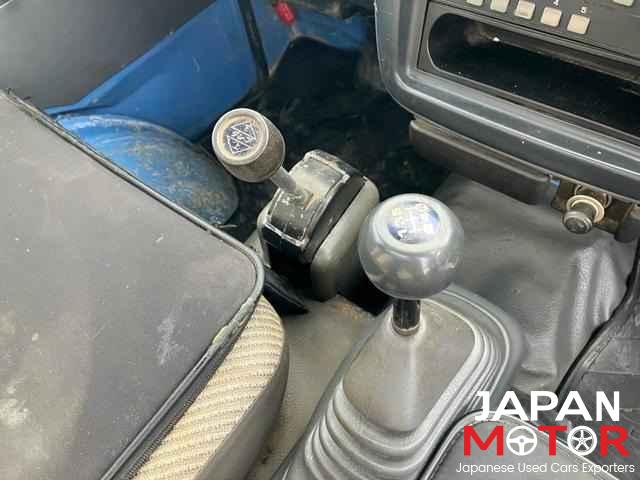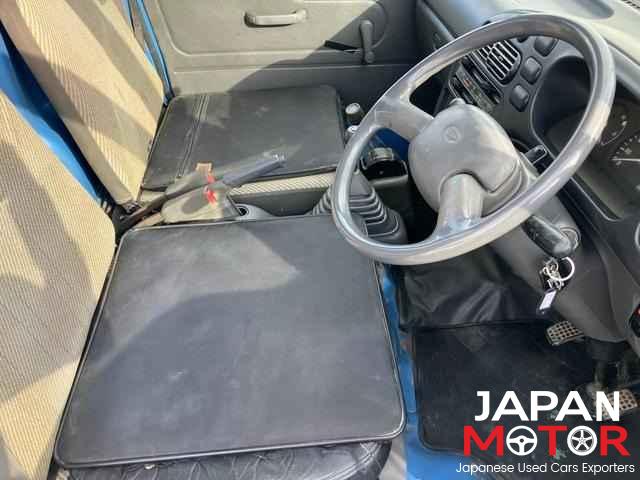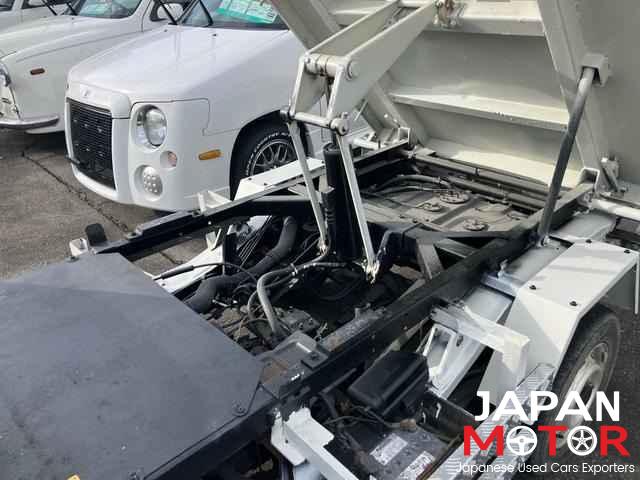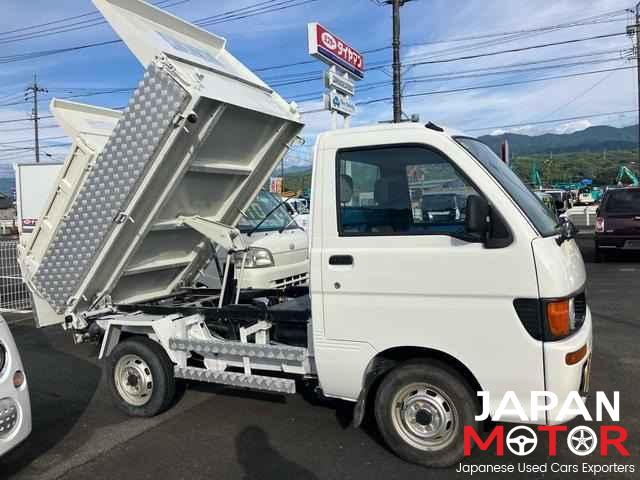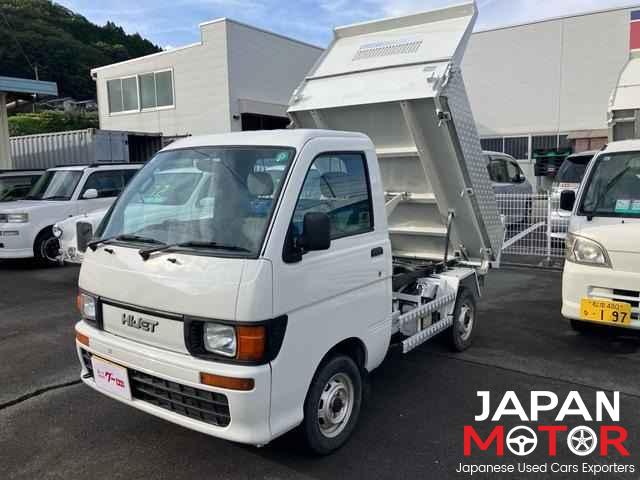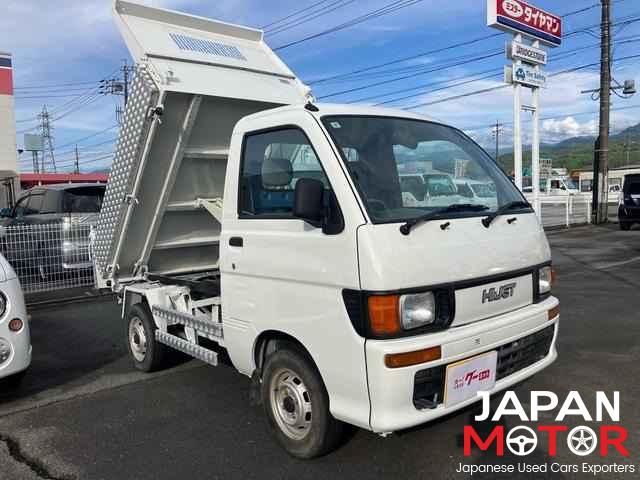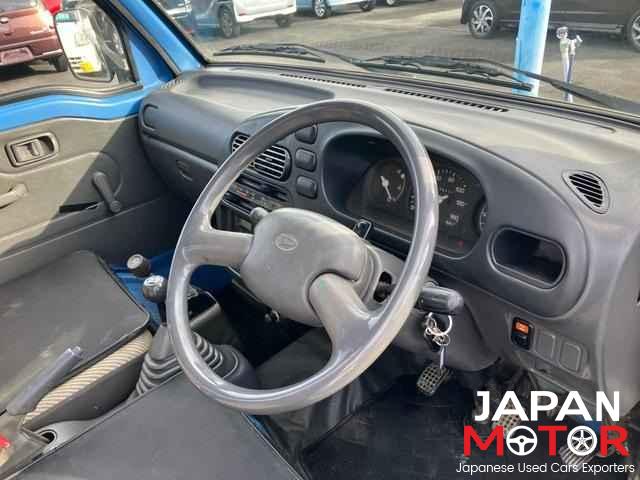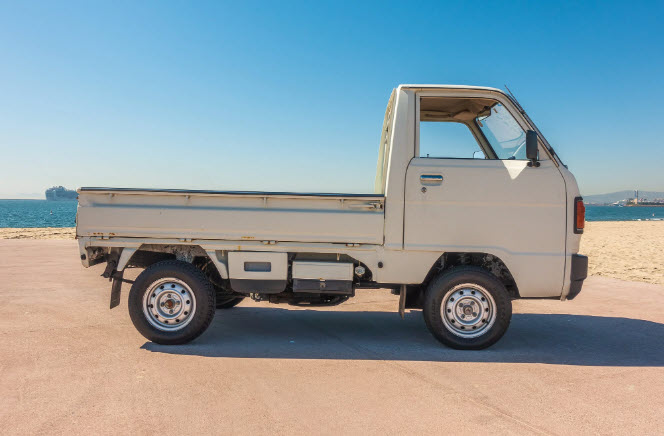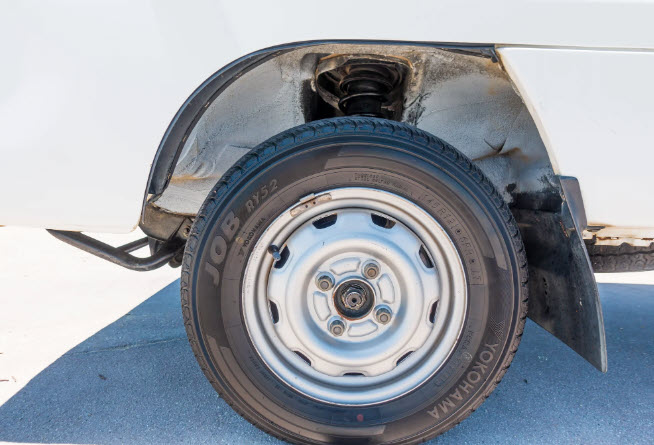Kei Truck Versus Canada: Part 1 - upkeep and maintenance
- the DREAM
- Oct 6
- 12 min read
Updated: Oct 22
Tiny Kei Trucks, Big Country: Surviving Canada (Part 1 — Ownership & Maintenance)
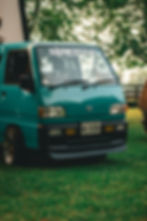
You bought a Kei truck because it’s adorable, efficient, and fits places your full-size pickup won’t—like your shed, your budget, or the bed of your full-sized pickup. This first article in the series is your “welcome to ownership in Canada” field guide: what breaks, what you’ll replace, how often you’ll do it, what it’ll likely cost in Canadian dollars, and where owners actually find parts and answers without selling a kidney. We’ll keep the tone light, the wrenching real, and the sources linked so you can read what we read!
🧡 Why We Put Up With These Tiny Titans
Let’s get one thing out of the way before we dive into the busted CV boots and salty wiring harnesses: kei trucks are ridiculously good at what they’re designed to do. They weren’t built to replace your half-ton — they were built to sneak into the places that half-ton could never go, sip fuel like a Prius, and do 80% of your dirty work with 20% of the weight, size, and cost.
A well-maintained Suzuki Carry DA63T, Daihatsu Hijet S210P, or Honda Acty HA7 can crawl through orchard rows, bomb down a cottage trail, or carry a half-ton of firewood into a spot your Silverado wouldn’t dare enter. They’re so light they don’t rut soft ground, so narrow they can slip between trees, and so cheap to run that forgetting to fill the tank becomes a real possibility.
A Daihatsu HiJet available through Japan Motor. Check them out and tell them theJDMdream send you! :)
They’re also fun. Not “V8 burnout” fun — more like “zipping down a dirt road in something that feels like a real-life Tonka truck” fun. They’re approachable machines: simple, honest, and usually fixable with basic tools and YouTube courage. For homesteads, farms, greenhouses, construction sites, and lakefront properties, a kei truck is less of a “vehicle” and more of a Swiss Army knife on wheels.
Why a Kei in Canada at all?
Kei trucks from the 2000–2010 era—think Suzuki Carry DA63T (2002–2011), Daihatsu Hijet S200/S210 (c. 1999–2004), Subaru Sambar TT (through late 2000s), Mitsubishi Minicab U61/62, Honda Acty HA6/HA7 (1999–2009)—deliver small-footprint utility with very un-truck fuel use. Typical catalog figures for a Carry 4WD hover around 15–18 km/L (≈ 5.6–6.7 L/100 km) depending on cycle and spec.
Canadian buyers also benefit from the 15-year import rule, which means you can find relatively modern 2009–2010 examples in 2025+ instead of waiting a quarter-century like our neighbours ( Transport Canada ; Riv.ca - official guidance on the 15-year exemption)
TL;DR Translation: tiny truck, big country, modest thirst.
The “Greatest Hits” of Kei Maintenance in Canada
Before we start listing every gasket, hose, and bolt that might one day give up the ghost, let’s clear something up: kei trucks are not maintenance nightmares. They are no more work than any other used vehicle — in fact, they’re often simpler and cheaper to maintain than a typical full-size pickup.
In Canada, the average annual maintenance cost for a standard passenger car sits around $1,000–$1,300 CAD when you include fluids, filters, brakes, and the occasional repair (CAA’s “Driving Costs” breakdown). A full-size pickup averages closer to $1,500–$1,800 CAD per year, thanks to heavier components, larger tires, and higher parts prices.
A kei truck? Most owners report $600–$1,000 CAD per year — and that’s often including “catch-up” work after import (MiniTruckTalk). Once you get past the first year or two of replacing old hoses and boots, costs settle into a rhythm closer to maintaining a compact hatchback than a Silverado.
In other words, the issues below aren’t red flags — they’re just the usual suspects you’d expect on any 15-to-20-year-old vehicle. The only difference is that kei trucks make those jobs easier and, often, cheaper.
Truth be told, there really isn't too much that breaks down on these; even between different models, there are very few distinct problems. If you don't believe use, believe ReDriven!
Common Canadian Gripes (and realistic fixes)
But salt, cold starts, and rural washboard roads don’t care that your truck is cute. Here’s what owners actually tend to service—and what it costs in CAD with real parts listings as best as we could find. Labor varies by shop and province, but figure ~$80–$180/hr in the wild (CAA calculator assumption $80/hr).
“It rusts fast.” True, thin steel + salt = freckles. Annual oil-based sprays (Krown-type) creep into seams better than thick asphalt undercoats that can trap moisture. Touch-up the bed and frame each fall (krown.com)
“It’s slow on the highway.” Also true—gearing/aero limit you; plan for rural/high-load routes, not 401 left-lane heroics.
“Cold starts are grumpy.” These tiny trucks were never built with Canadian winter weather in mind. Install a 200–300W magnetic pad or in-line coolant heater (Canadian Tire/NAPA listings above) and run a GL-4 gearbox oil that shifts when it’s frigid.
“Lifts cause weird camber/CV noise.” They can. Pick kits with camber correction and moderate tire sizes; owners report binding with some 2″ kits if geometry isn’t addressed (Reddit).
📅 How Long They Last: The Kei Truck Maintenance Timeline
Owning a kei truck is kind of like owning a Tamagotchi on wheels — keep up with the feeding (oil), cleaning (fluids), and occasional life-saving surgery (timing belt), and it’ll stay happy for years. The table below is based on Japanese shaken inspection data and shop records, and gives you a realistic “bingo card” of when parts are most likely to demand attention.
Don’t panic if that looks like a lot — every vehicle has a maintenance rhythm, and for kei trucks this one’s about as complicated as a houseplant with a driver’s license. Stay ahead of the curve and most of these jobs will feel more like routine chores than disasters.
The Usual Suspects: The Quirks Every Kei Truck Will Throw at You
Of course, knowing when things are likely to wear out is only half the story — the other half is understanding how they fail and what that means for real-world ownership. Because while kei trucks aren’t any more maintenance-hungry than a Civic or Corolla, the weak spots they do have are pretty predictable. From torn CV boots and leaky radiators to squeaky brake shoes and grumpy alternators, here’s a closer look at the usual suspects you’ll run into once you start racking up kilometers in Canada.
Issue #1 - CV/Steering & Suspension Boots (Canada’s gravel snack)
Those little rubber “boots” around your CV joints, tie rods, and ball joints are like grease-filled raincoats — they keep dirt out and lube in. But Canada’s gravel roads, salty winters, and bone-cracking cold chew through them way faster than Japan’s mild streets. It’s why Japanese shops list torn boots as one of the most common shaken inspection fails (Hakko Cars).
The cost: Aftermarket boots usually run $25–$60 CAD each, or $40–$100 for full axle kits — about the same as Japanese DIY prices (Minkara owner note). For reference, brake pads for a Suzuki Carry DA63T are about $75–$100 CAD (Mini4x4.ca).
Why it matters: Ignore a cracked boot and grease leaks out, dirt gets in, and your cheap $40 fix turns into a $400 axle replacement. It’s the kei-truck equivalent of skipping sunscreen — you might get away with it for a bit, but it’s gonna hurt later.
Issue #2 - Cooling System: Water Pumps, Thermostats, Radiators
Your kei truck’s cooling system is small but mighty — and it’s one area you really don’t want to ignore. A water pump keeps coolant flowing through the engine, a thermostat controls temperature, and the radiator dumps all that heat into the air. If any of these parts fail, overheating can happen fast — and a cooked engine is a one-way ticket to the scrapyard.

The old thermostat (right side) is also somewhat f****ed. - Hakkocars (actual translated quote - LOL)
The cost: A new water pump usually costs $90–$145 CAD (Yokohama Motors) plus $300–$600 in labour. Thermostats are cheaper — typically $40–$80 CAD — but worth replacing if your truck runs too hot or too cold. Radiators usually last a long time but may need replacing after 15–20 years, costing about $225 CAD for parts and $385–$675 installed (Mini4x4.ca listing).
Why it matters: Coolant leaks, clogged radiators, or a failing thermostat can all lead to overheating — and on a kei truck, that’s game over. Keep an eye on coolant levels, replace parts before they fail, and your little workhorse will stay chill for years to come.
Issue #3 - Brakes: Pads, Shoes, Hydraulics
Brakes on a kei truck are about as simple as they get — small rotors, lightweight calipers, and no fancy electronics to complicate things. But simplicity doesn’t mean “set it and forget it.” Because these trucks often haul heavy loads or live on dirt roads, brake pads and shoes wear out a bit faster than you might expect.
The cost: A fresh set of front brake pads usually runs $75–$100 CAD (Mini4x4.ca), and replacing them is a routine job — about 1 to 1.5 hours of labour. If the caliper sliders seize from road salt (a very Canadian problem), that adds some time and cost. Hydraulic fluid should be changed about every 2 years to keep the brake system working smoothly (JMS guide).
Why it matters: Ignore worn pads and you’ll grind down your rotors — turning a cheap afternoon job into a pricier repair. And don’t skip fluid changes: old brake fluid absorbs moisture over time, which can cause spongy brakes or corrosion inside the system. In short: fresh pads and fluid = short stopping distance and no heart attacks at red lights.
Issue #4 - Charging & Starting (Alternators, Batteries)
If the cooling system is your kei truck’s heart, the charging system is its pacemaker. The alternator keeps the battery charged while you drive, and the battery powers everything when the engine’s off — from starting the truck to running lights and accessories.
The cost: Alternators usually last 10–15 years or about 120,000–150,000 km before they start showing signs of weakness. Time-wise, that's exactly when you can freshly import them into Canada. Replacement units cost around $200–$400 CAD (MiniTruck.ca) plus labour. Batteries are relatively inexpensive ($100–$180 CAD), but make sure you get the right size — many JDM trucks use smaller JIS-style batteries (like 38B19R) rather than the standard North American BCI group sizes (Battery Council size chart).
Why it matters: A weak alternator will leave your battery dead every few days, and a failing battery will leave you stranded in a Tim Hortons parking lot. Replacing both on time means smooth starts, bright headlights, and zero jump-start emergencies when it’s -20°C.
Issue #5 - Clutches & Meters (the manual life)
If your kei truck has a manual transmission — and most do — the clutch is the unsung hero that makes every shift happen. Over time, the friction material wears down, and eventually it’ll slip when you accelerate or make shifting feel rough. Instrument clusters (or “meters”) can also wear out with age, leading to dead gauges or flickering displays — mostly a cosmetic issue, but annoying if you like knowing how fast you’re going.
The cost: A clutch replacement usually happens between 100,000–150,000 km, depending on how the truck was driven. Expect to pay $400–$800 CAD in parts and labour (Goo-Net overhaul example). If your instrument cluster goes bad, replacement or board-level repair can cost $500+ — though some owners source used clusters online for much less (Goo-Net meter repair log).
Why it matters: Driving with a slipping clutch is like trying to sprint in flip-flops — you’ll get nowhere fast. Fix it early, and your kei truck will feel crisp and responsive again. As for dead gauges, they won’t stop the truck from running, but they do make you feel like you’re piloting a spaceship with half the lights turned off.
The good news? None of this is catastrophic. Kei trucks have their quirks — boots that split, water pumps that give up, brake pads that wear quickly — but they’re predictable quirks. And because most of these jobs are straightforward and inexpensive, they’re more “weekend project” than “financial apocalypse.” Treat maintenance as part of the ownership experience, not a burden, and your tiny truck will keep working hard for decades — usually with far fewer headaches than something three times its size.
Fluids Canadians Argue About (So You Don’t Have To)
Transmission & Differential Oil:
Your kei truck has two main places that need gear oil — the transmission (which handles shifting) and the differentials (which send power to the wheels). Most kei trucks built between 2000 and 2010 need a type of oil called API GL-4 in the transmission, and a slightly tougher version called GL-5 in the front and rear differentials. That’s exactly what Toyota and Daihatsu list in their spec sheets — GL-4 75W-80 for the gearbox and GL-5 80W-90 for the diffs (Toyota/Daihatsu specs).
A lot of owners prefer to use something like Red Line MT-90 GL-4 because it makes shifting smoother, especially in cold Canadian winters. And yes — they’ve talked about this endlessly online (see the forum debate here).
💡 Why GL-4 matters: The brass components inside a manual transmission (called “synchros”) work best with GL-4 because it’s gentler on the metal. GL-5 is stronger, but it can wear those parts down over time. If you’re not sure, just follow the original spec — it’s there for a reason. For a deeper dive, here’s a great explanation: “The Difference Between GL-4 and GL-5” by Richard Widman.
Fuel Hoses & Ethanol:
Most gas in Canada contains up to 10% ethanol (E10), and older Japanese rubber fuel hoses don’t love that stuff — over time, it can make them soft or brittle. If you ever need to replace your fuel lines, choose modern hoses that are ethanol-resistant. Look for labels like SAE 30R9 or J30R14 T2 — also known as “Barricade” hose — which are specifically designed to handle ethanol without breaking down (Gates hose guide).
Cold Starts, Warm Hearts: Winterizing Without Tears
For friends in cottage country and those firmly north of the 49th parallel, this one is for you. Canadian winters don’t play nice — especially with engines designed for Japan’s milder climate. Kei trucks will start in -25 °C… eventually… but without some winter prep, you’ll be draining the battery and your patience.

Install a block heater:A block heater keeps your engine warm while parked, making cold starts easier, faster, and less stressful on internal parts. It also helps oil flow better, reducing wear during startup (Canadian Tire guide). Expect to pay $50–$120 CAD for the unit and about $100–$200 for installation if you’re not DIY-ing.
Use a magnetic oil pan heater:If a full block heater isn’t in the cards, a magnetic oil pan heater is the budget-friendly hack. It sticks to the oil pan, gently warming the engine oil overnight so it’s not molasses-thick in the morning. They’re usually $40–$70 CAD and can be installed in seconds (Reddit).
Other cold-weather musts:
Use 0W-30 or 5W-30 synthetic oil to improve cold flow.
Consider a battery blanket or trickle charger to avoid “click and die” starts.
Keep coolant rated to -40 °C, not the milder blends sold in Japan.
Pro tip: Japanese kei trucks rarely face temperatures below -5 °C. So, “cold weather prep” isn’t optional here — it’s necessity. We also did an winterizing article for your regular JDM ride!
Block heaters are scarce as “direct-fit” for many Kei engines, so Canadians 'get creative' with magnetic oil-pan or in-line coolant heaters. Owners often swap tips in Canadian groups on what fits where on Facebook
Dress to Impress (and Conquer): Body Kits, Lifts, and Off-Road Mods
And since we're getting creative, let's talk mods. Sure, kei trucks are adorable in stock form — but there’s no rule saying your Suzuki Carry or Daihatsu Hijet has to look like a retired farm tool forever. Japan’s aftermarket scene has exploded with custom body kits, overfenders, LED grilles, and lifted suspensions that turn these 660cc workhorses into trail-ready micro off-roaders. Popular tuners like Hello Special and Sho Produce offer kits ranging from subtle aero bumpers to full-on “mini G-Wagen” conversions.
For off-road use, a 1.5–2 inch suspension lift is usually the sweet spot — big enough to fit chunkier all-terrain tires without ruining drivability.
Lifts can be done with coil spacers (cheaper, ~$200–$400 CAD) or full suspension kits (often $600–$1,200 CAD) from specialty shops or DIY-sourced from Japan. Keep in mind: if you’re lifting beyond 2 inches, you’ll need to extend brake lines and possibly adjust driveshaft angles, so a professional install is recommended.
💡 Pro tip: Many Canadian owners mix and match — ordering the visual upgrades directly from Japanese tuners, then having the lift installed locally by a 4x4 or off-road specialty shop familiar with imported vehicles. That combo keeps costs manageable and ensures your tiny truck is as ready for the trail as it is for Instagram.
Smart Kei Hacks: Making Ownership Easier (and Cheaper)
A lot of kei parts cross over with other Suzuki/Daihatsu/Honda bits—or have solid aftermarket equivalents. Learn to decode the OEM number, then hunt alternatives. Tools like IMPEX Japan, MegaZip, and PartSouq let you look up part numbers, compare OEM vs aftermarket, and avoid the “import tax” on simple consumables.
Use a Global Sourcing Workflow
Here’s the formula:
Pull the OEM part number (MegaZip).
Price the OEM at IMPEX Japan.
Check aftermarket options at PartSouq.
Sanity-check it against community wisdom (MinitruckTalk).
Join the Right Communities
Crowd wisdom beats guesswork. These groups share part numbers, suppliers, and quick fixes daily:
Stockpile Consumables
Filters, pads, bulbs, belts—keep a shoebox of the common stuff so a $10 part doesn’t sideline you for 2+ weeks and you have to DHL it during a postal strike. Canadian suppliers like mini4x4.ca and MiniTruck.ca make this easy.
Is It Worth Keeping One Running Here?
If you keep your expectations in Kei scale, yes.
Annualized, a typical owner doing preventive work (fluids, boots/brakes as needed, one “bigger” job every few years) spends hundreds, not thousands each year—especially if you embrace the part-number + global sourcing strategy (IMPEX Japa/MegaZip). Rustproof yearly, replace aged fuel hose with ethanol-rated line , and budget a weekend or two for boot/brake DIY if you’re handy.
Where they shine in Canada: tight sites (cottages, farms, orchards), low-speed utility, cheap consumables, sip-sized fuel bills, and sheer charm.
Where they don’t: sustained 110 km/h, hauling heavy tonnage weights, ignoring salt.
If that balance sounds like your life, the tiny Kei truck earns its spot in the garage.
So, after reading this, are you game to buy a kei? Or do you own a kei and have comments to share? Post below! We'd love to hear from you!


